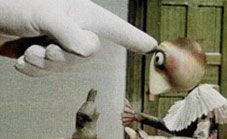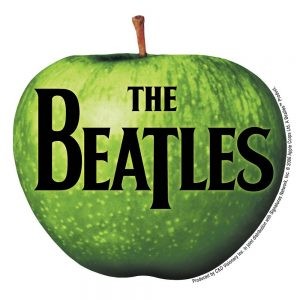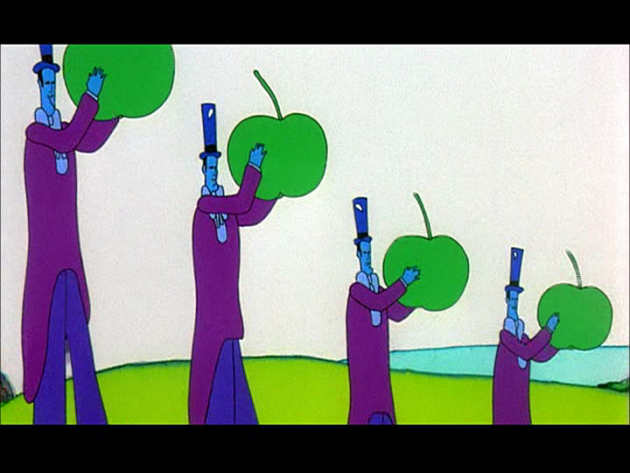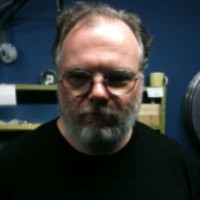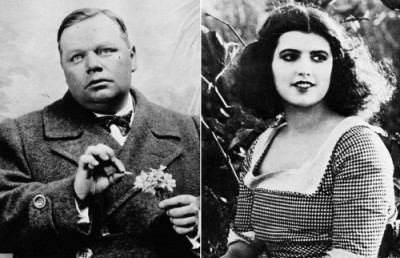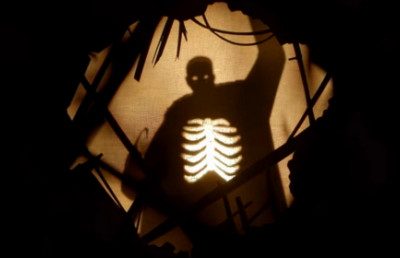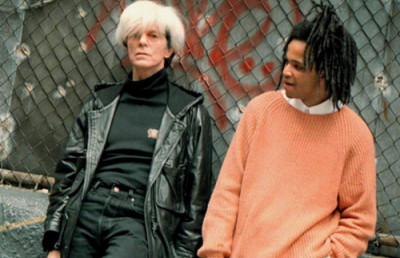A Deep Dive in a Yellow Submarine
Some Notes on the Filmmakers and References in the Classic Animated Feature
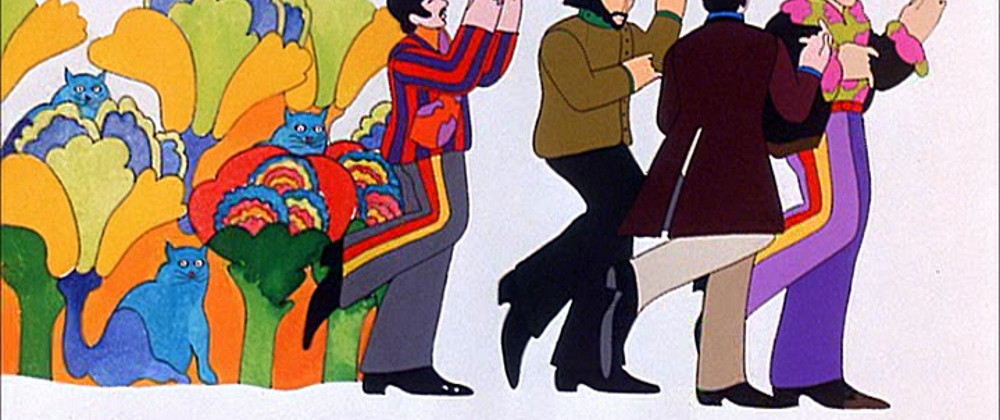
The animated feature film Yellow Submarine (George Dunning, 1968) was an unusual film for its time. In an era when the genre was dominated by Disney, it was something completely different, an exuberant explosion of styles that abandoned Disney-style realism and, instead of the show tunes typically used in these films, had at its heart a collection of rock ‘n’ roll songs by what was then the most popular band in the world. Perhaps because it was reviewed seriously by critics and perceived as more geared toward adults than children, it was on its immediate release only a modest hit (earning under $1 million at the domestic U.S. box office, compared to the $11.5 earned in the United States during its initial run by Disney’s The Jungle Book (Wolfgang Reitherman, 1967), which had been released the year before. 1 However, Yellow Submarine quickly developed a strong cult following, not least among those looking for an appropriate film to watch while on an acid trip.
The Filmmakers
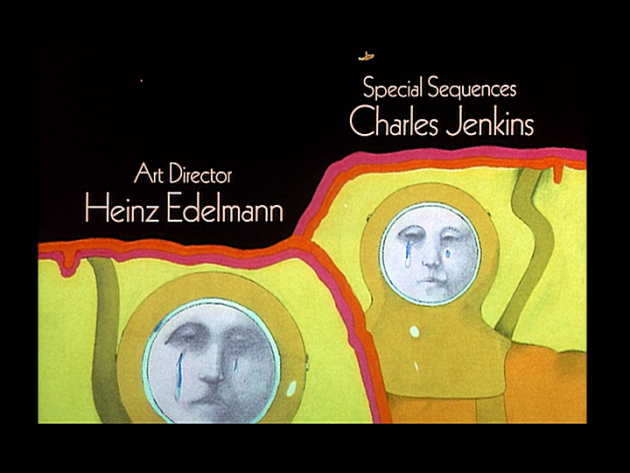
Heinz Edelmann was a Czech expatriate who was working as a graphic designer and illustrator in Dusseldorf when he was hired as the film’s art director. It was the first time he had worked on a film. 2 This lack of experience may have turned out to be advantage, as it forced the animators working from his designs and model sheets to be innovative. One of the key animators, Michael Stuart, noted that Edelmann’s “line of drawing was totally different to anything that had been done in animation before.” 3 His two-dimensional flat designs ended up being animated in “a sort of mix between three-dimensional and two-dimensional” and a mix of techniques was used to incorporate his ideas. 4
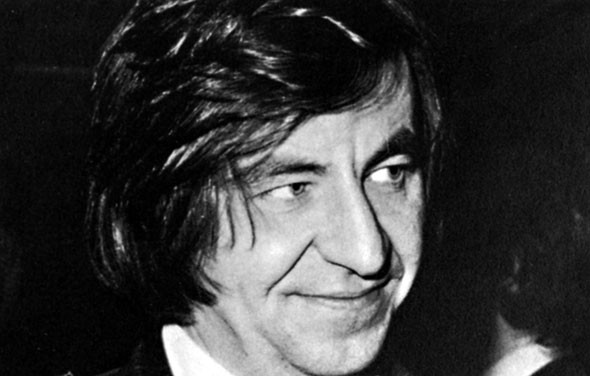
Heinz Edelmann
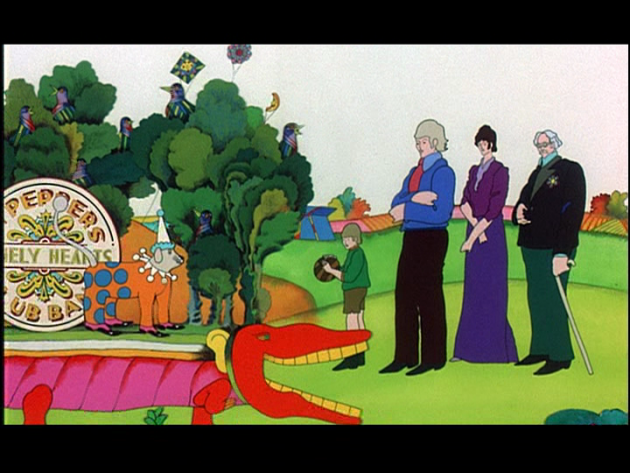
“A sort of mix between three-dimensional and two-dimensional”
Among the things Edelmann was specifically responsible for creating were the Beatles figures, the Yellow Submarine, Pepperland, the Blue Meanies, the Flying Glove and almost all the bizarre monsters and characters (at that time, he says, he was “heavily into monsters,” and it shows). 5
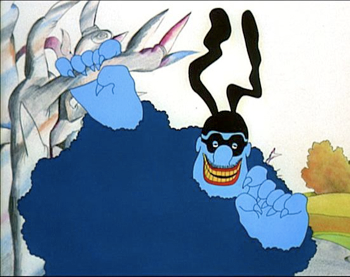
A Blue Meanie
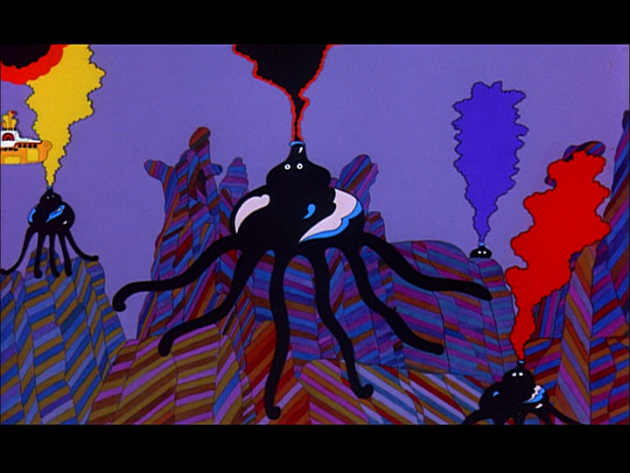
“Heavily into monsters”
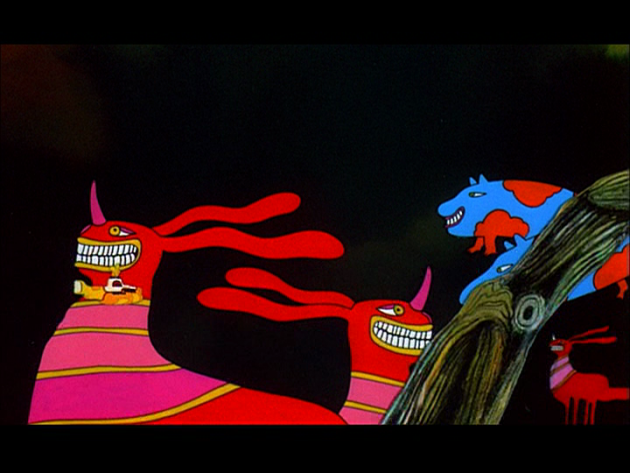
Really into monsters . . .
The design of Yellow Submarine is sometimes credited, by himself as well as others, to the artist Peter Max, but he did not become well known until a bit later and had no influence on the film. 6 Edelmann states categorically that “I never thought of Mr. Max or his work during the entire production period, nor was he mentioned by, or known to anyone else on the team.” 7 Edelmann was, however, aware of other pop artists, including Milton Glaser, 8 who is referenced in the sequence where the Beatles’ music brings the Pepperlanders back to life, as a woman’s hair becomes a psychedelic rainbow in the manner of Glaser’s famous poster of Bob Dylan. Robert R. Hieronimus argues that “the 1960s are defined by the pop art nouveau look as much as they created it, and that designers around the world were picking up the same ‘vibe’ and adapting it their own way.” 9 Edelmann’s version of this “vibe” was a deliberate attempt at a psychedelic experience. As he said, “I did try to consciously overload the audience with impressions . . . there is always a bit more colour than one would expect, and a bit more design.” 10
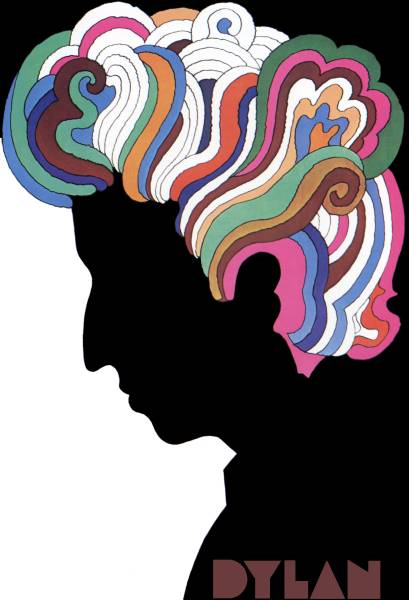
Milton Glaser’s Bob Dylan poster
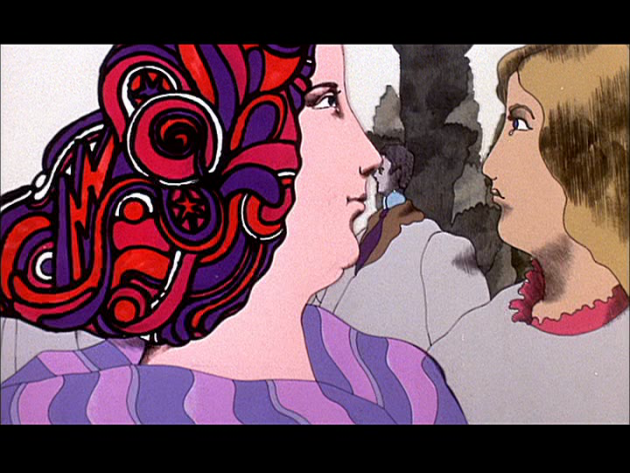
Hair as a psychedelic rainbow
The film’s director was George Dunning, a Toronto-born graduate of the Ontario School of Art who had been one of the first animators hired by Norman McLaren when he set up the National Film Board of Canada’s animation department in 1942. Dunning’s most memorable work at the NFB was as director of the classic Cadet Rousselle (1946), an innovative stop-motion film that employed flat metal figures rather than puppets, for the very popular “Chansons de chez nous” series. He left the NFB in 1949 to help found Graphics Associates, Canada’s first private animation company. The Toronto-based company produced some of the country’s first television commercials and gave the experimental filmmakers Michael Snow and Joyce Wieland, along with animator Richard Williams, 11 among others, their first jobs in the industry. In the mid-1950s, he moved on to UPA, at that time the freshest and most inventive animation studio in the United States, run by Canadian expatriate Stephen Bosustow. While there, Dunning worked on several Mr. Magoo films, among other projects. With other former UPA animators, he then formed an animation company in London, where he directed the prize-winning shorts The Apple (1959) and The Flying Man (1962), but paid the rent by producing commercials and low budget cartoon TV series that adapted UPA’s limited animation techniques. The most commercially successful of these had been The Beatles (1965-1967). In fact, the original idea of a Beatles animated film was simply an extended version of one of the TV episodes, which explains why the filmmakers were given 11 months to deliver a feature with a budget of less than a million dollars. This was a fraction of what Disney (the only company producing animated features at that time) spent in terms of time and money on one of its films. 12 Although it was popular and produced by his studio, Dunning thought the series had a “very poor kind of design” 13 and decided to ignore the wishes of the film’s producer and try to attempt something genuinely creative. 14 Dunning’s work on the film is limited to the “Lucy in the Sky with Diamonds” sequence, which he created with animator Bill Sewell, 15 but his most important contribution was the decision to go beyond what was expected, and then hire the team who could achieve it.
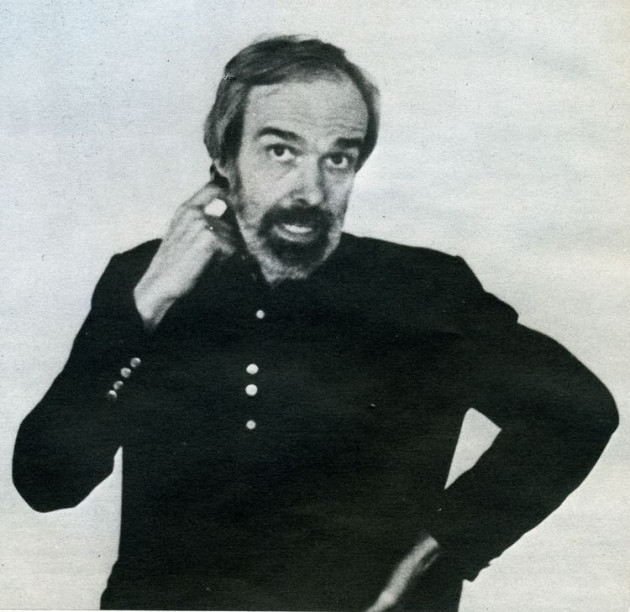
George Dunning
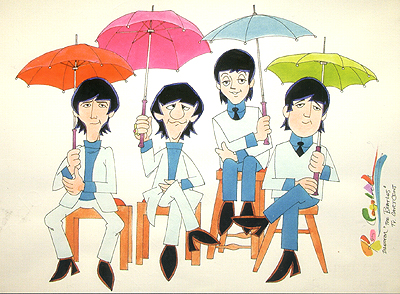
The Beatles TV cartoon
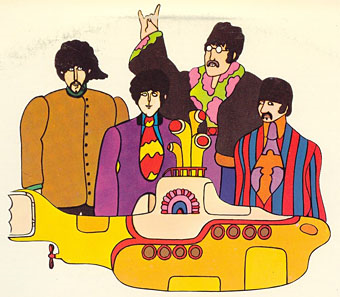
The Beatles in Yellow Submarine
A third major figure in creating the film was “special sequences” director Charlie Jenkins, who was an expert at mixing animation media and was responsible for the “Eleanor Rigby” sequence. 16 It was Jenkins who devised a method of changing the perspective during that sequence, rotating the camera table to 90 degrees and moving the foreground down and background up by turning the peg bar handles. 17
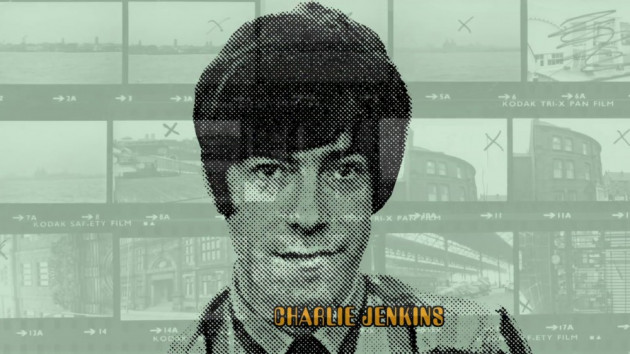
Charlie Jenkins
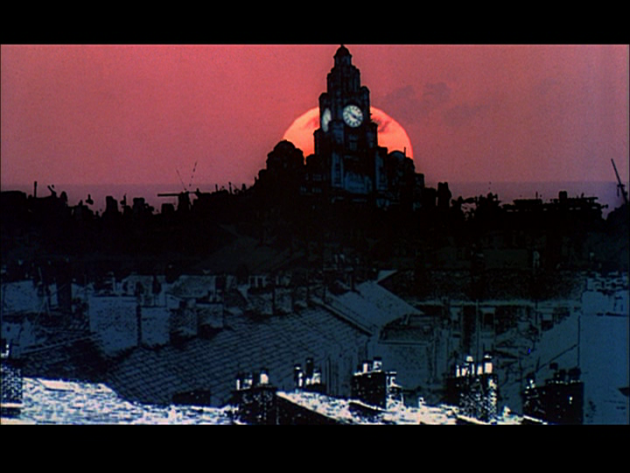
The sun sets behind the tower
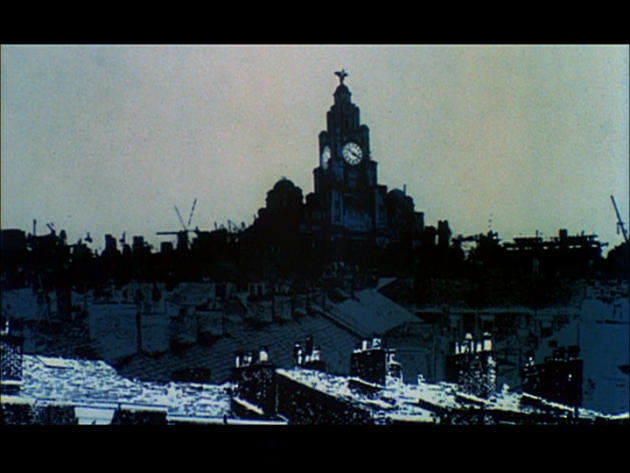
The wheels turn and the tower begins to sink . . .
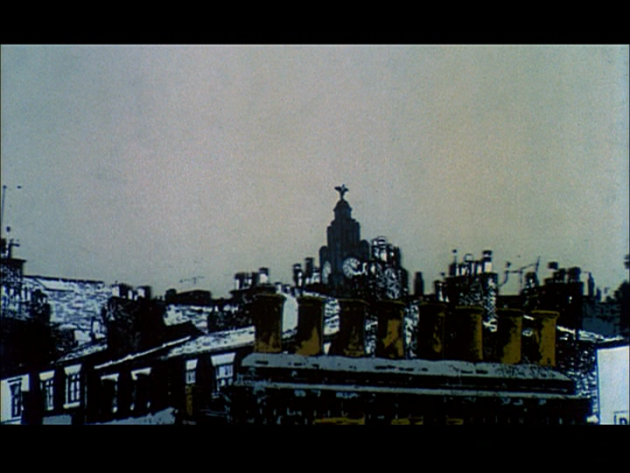
The foreground’s chimneys are now almost level with the tower
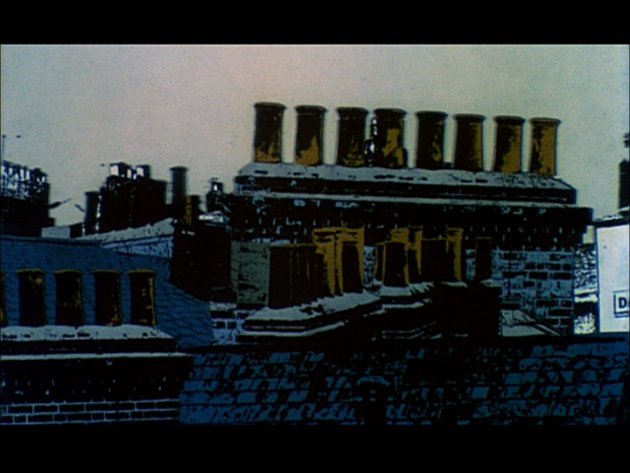
The chimneys in the foreground now dominate
The Beatles had little direct involvement in Yellow Submarine. This was partly because they considered the cartoon TV series a “rip-off” and wanted nothing to do with a feature that was anything like it. 18 Even if they had wanted to be more involved, it is unlikely they could have. Hieronimus notes that the agreement to make the film was finalized in June, 1967, a few weeks after the release of the Sgt. Pepper’s Lonely Hearts Club Band album, and the film premiered in August, 1968. In that period, they sang “All You Need Is Love” to a then record audience of over 400 million people as part of the first world-wide satellite TV production; produced the film and album of Magical Mystery Tour (shown on British TV at Christmas, 1967); their manager Brian Epstein died in August, 1967; John met Yoko; Paul met Linda; Apple Corporation was founded; the group made a famous trip to India to study with the Maharishi Maheshi Yoga in February, 1968; and they began recording the double album The Beatles (popularly known as The White Album) in March. 19 In the end, they made a brief appearance at the end of the film (their characters were voiced by actors for the rest of it) and produced four new songs, the bare minimum required by the film contract. Of the songs, “Only a Northern Song” had been recorded for the Sgt. Pepper sessions, but failed to make the album. The other three were considered by The Beatles and their producer George Martin as having “scraped the bottom of the music barrel.” 20 This is too harsh, as all four songs, particularly “Only a Northern Song” and “Hey Bulldog,” are fine tunes, perhaps a bit weak by their high standards, but quite good by most anybody else’s. The Beatles would eventually become admirers of the film, but only after it was finished. 21
However, just because they were not physically present, it does not follow they had no creative influence, as their spirit runs through the film. There were, first of all, the classic songs such as “Lucy in the Sky with Diamonds,” “All You Need Is Love,” “Nowhere Man,” “Eleanor Rigby,” and “Yellow Submarine” that were being animated. The artists did not try to illustrate the song lyrics, but they did try to express their essence. There are no specific drawings of Eleanor Rigby or Father Mackenzie in the “Eleanor Rigby” sequence, but the grey, deserted streets and the forlorn characters certainly catch the idea of a city full of “all the lonely people.” Similarly, the dazzling colours and kaleidoscope imagery of the “Lucy in the Sky with Diamonds” sequence evokes the psychedelic era more effectively than anything else I can think of. There may not be any tangerine trees or marmalade skies in the scene, but there is a dreamlike quality that suggests you are seeing a place where you could find them if you looked hard enough. There is also the Sgt. Pepper’s Lonely Hearts Club Band album cover, designed by Peter Blake and Jann Haworth, with its cutout figures and pop art sensibility which Antal Kovacs argues “is very closely linked with the look of the film.” 22 While Edelmann does not mention that album cover specifically, he does cite the drawings and poetry in John Lennon’s books In His Own Write (1964) and A Spaniard in the Works (1965) as influences, not so much on his drawings, but on the type of drawings he was producing. 23 Similarly, the cheeky, pun-filled dialogue provided by the various writers is very much in the style of those books. Beyond that, to understand the effect The Beatles had on the film it is necessary to understand the place they held in the popular culture of the time. Why did George Dunning decide a feature version of the TV series wasn’t good enough? Why did Heinz Edelmann feel that the original script, which he largely ignored, “did not do justice to what The Beatles were actually becoming”? 24 The answer is best shown in the film sequence where The Beatles’ music brings the Pepperlanders out of suspended animation, changing them from monochrome greys to vivid rainbows. A friend of mine who was a teenager in the 1960s has described their 1964 appearance on The Ed Sullivan Show as being “like the moment in The Wizard of Oz when the world changes from black and white to colour.” This is why it was important to the artists to do a proper job. Stanley Kauffman wrote in his review of the film that “I don’t know how I knew what a Beatles animated film ought to look like, but the moment Yellow Submarine began I knew Edelmann and company were exactly right.” 25 As important as the songs, this zeitgeist is what The Beatles brought to the film.
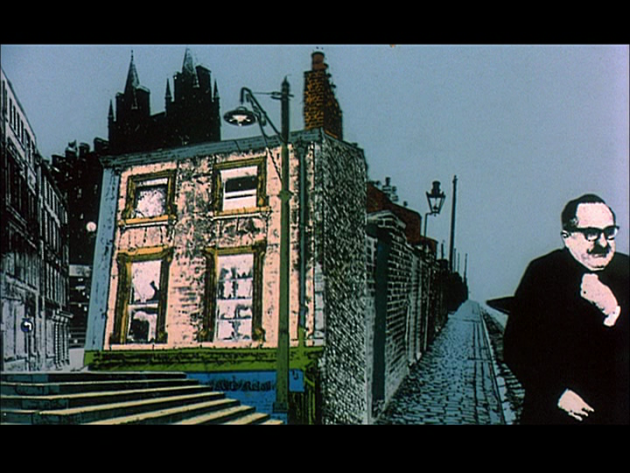
Liverpool as a forlorn landscape
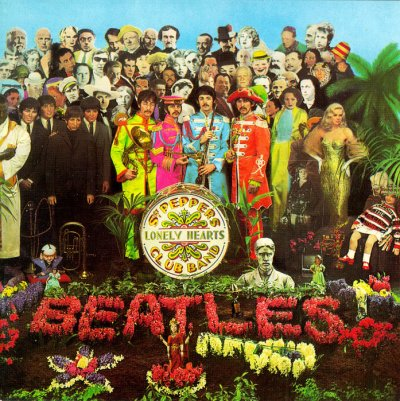
Sgt. Pepper’s Lonely Hearts Club Band album cover
The people making Yellow Submarine needed this inspiration because of the chaotic situation created by the low budget and tight timetable. Much of the animation was done before there was a script, and Lee Minoff, credited with writing the original story, has acknowledged that the film “was drawn more than it was written.” 26 The musical director, who also produced all but one of The Beatles’ studio albums, George Martin, was given sketches and storyboards to start with, and then reels of film as they were finished, but was given no other directions for his scoring or orchestration except “be as imaginative as you can.” 27 This chaos may have turned out to be an advantage, because it allowed a number of artists to work with an unusual level of freedom in an even more unusual diversity of styles.
Some Influences, Sources, and References
In a sense, the unifying concept of the film was its diversity. Among the animation styles and techniques used were the traditional cel animation identified with Disney and other Hollywood studio cartoons, cut-outs of figures made of paper or other material, collages of related and unrelated images and materials, stop motion pixilation of figures within the frame, live action filming of The Beatles at the end of the movie, rotoscoping (tracing over a series of frames of film footage to duplicate live action), using multiple planes to show figures and landscape renderings at different levels of depth in the same shot, the 1960s movements pop art, op art, and psychedelic art, flat animation, transformation, and watercolours. 28 To go with this variety, there are many artistic, cultural, and film references that draw on different periods and styles. In fact, there are too many to list or even attempt to track all of them down, but at least I can offer a taste.
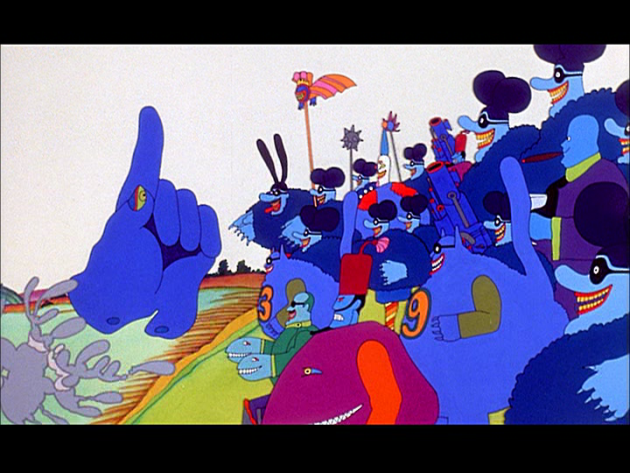
Blue Meanie henchmen
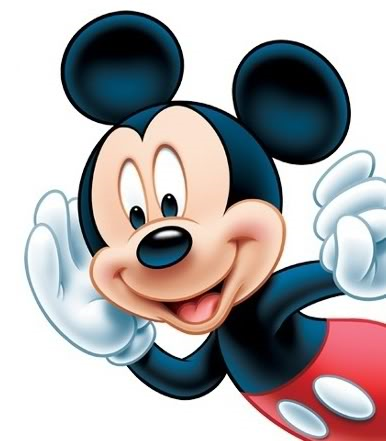
Famous ears
The Blue Meanies, of course, have ear shaped hats very similar to those of a very famous cartoon character that Edelmann was not a fan of. The head Meanie and his sidekick Max were drawn to resemble the producers, Al Brodax and Abe Goodman, who had wanted a cheap cartoon along the lines of the TV series and reluctantly went along with the film’s experimentation. As they were also both Jewish, this is the source of the “You don’t look bluish” joke. 29 The Flying Glove had been used by Edelmann in previous artwork, but while he has never specifically mentioned Jiri Trnka as an influence, he has stated he was aware of Eastern European animation of the period. 30 Given that, it is not too much of a stretch to consider Trnka’s short film The Hand (1965), with its authoritarian glove, as an inspiration.
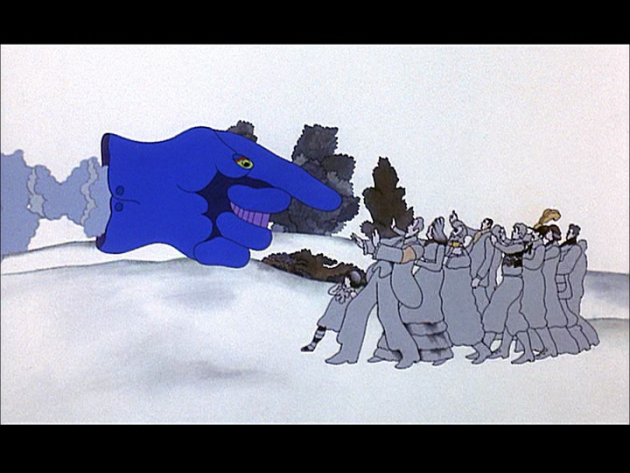
The FlyingGlove
There are a blizzard of references in the film, ranging from the obvious to the obscure, and probably touching any given point in between. An excellent example of this is the “Eleanor Rigby” sequence, in which the bulldog draped in the Union Jack is a reference to the “British Bulldog” as a symbol of Britain. The football (soccer) players in blue and red uniforms is a reference to Liverpool’s two great teams, Liverpool Football Club (who wear red) and Everton (who wear blue), whose rivalry is legendary. 31
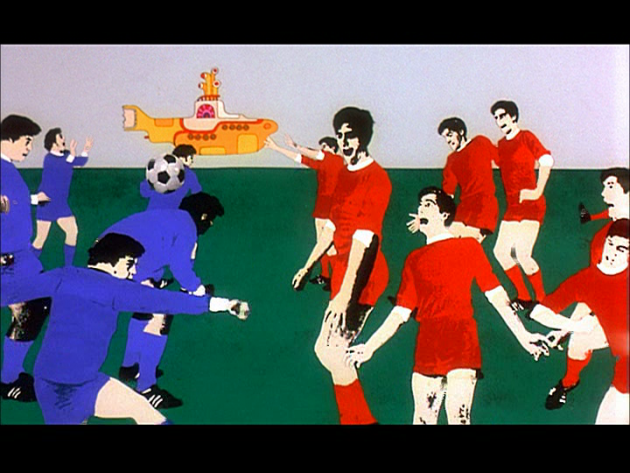
Everton in blue and Liverpool Football Club in red.
A frequently referenced source is the surrealist painter René Magritte, who died in June, 1967, at about the time that work on the film was beginning. There was already a connection between Magritte and The Beatles. Magritte’s 1966 painting “Le jeu de Mourre,” a picture of a green apple with “au revoir” written across it, was the inspiration for the iconic logo of The Beatles’ company Apple Corps. Magritte had already prominently featured a green apple in his 1946 painting “The Son of Man,” and an apple quite similar to those found in Magritte’s paintings finds its way into the film as the weapon of choice of the Apple Bonkers.

René Magritte’s “The Son of Man” (1946)
Another prominent appropriation from Magritte was from his “Golconda” (1953), which depicts a group of men wearing identical dark overcoats and bowler hats, who may be floating over a cityscape, or are possibly raining down on an anonymous city. This image was the clear inspiration for the film’s host of bowler hatted umbrella men lurking on Liverpool’s rooftops (Magritte, of course, was also responsible for a famous painting of an umbrella with a glass balanced on top of it).
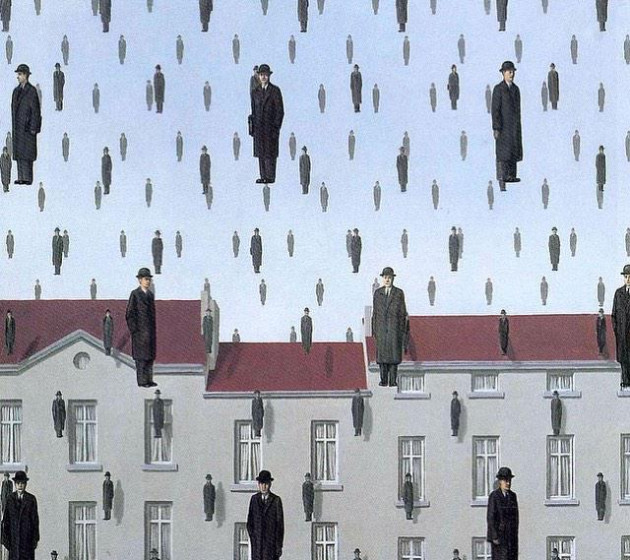
René Magritte’s “Gloconda” (1953)
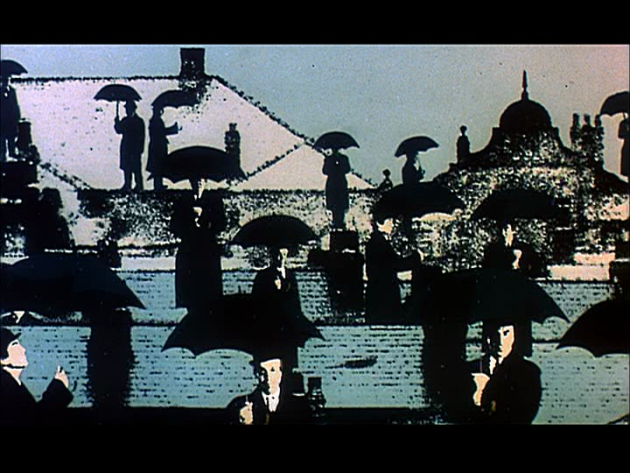
Yellow Submarine’s umbrella men.
There was also a later nod to Magritte, who was famously obsessed with bowler hats, which appear in over 50 of his paintings. Sure enough, one can be seen flitting between doors in The Beatles’ cavernous, museum-like residence.[[Chernick, Karen. “Why Magritte Was fascinated with Bowler Hats.” Artsy. (April 12, 2018): https://www.artsy.net/article/artsy-editorial-magritte-fascinated-bowler-hats

Magritte with “Le Barbare” (1938)
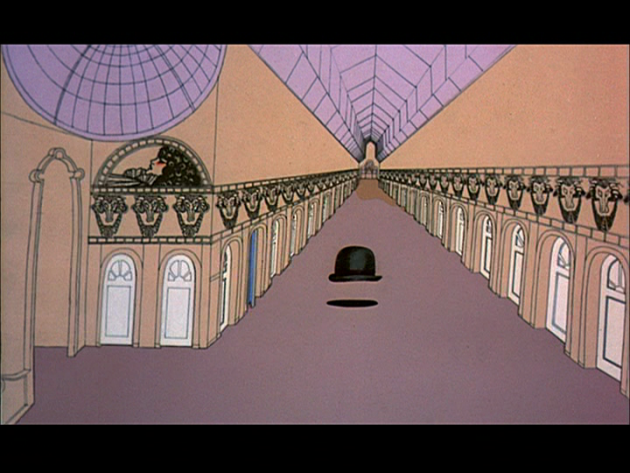
A floating bowler hat
Magritte is not the only artist referenced in the film, as Rodin’s “Thinker” (with added wings) can be seen perched on a rooftop toward the end of the “Eleanor Rigby” sequence, Toulouse-Lautrec shows up at The Beatles’ place, and the elongated figures of the Apple Bonkers in their Edwardian-style clothes are inspired by the work of British artist Aubrey Beardsley. 32
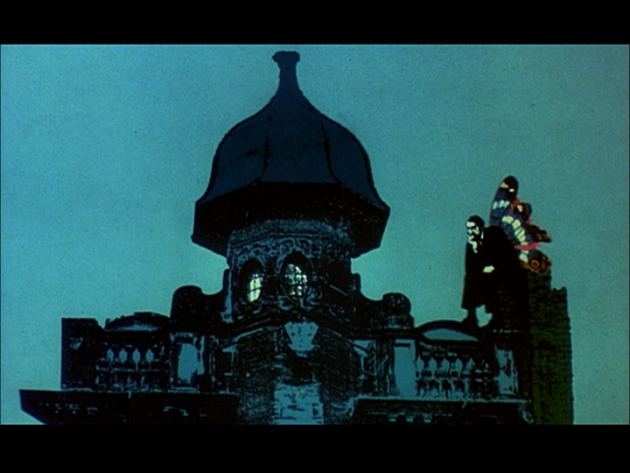
Rodin’s “Thinker” (with wings)
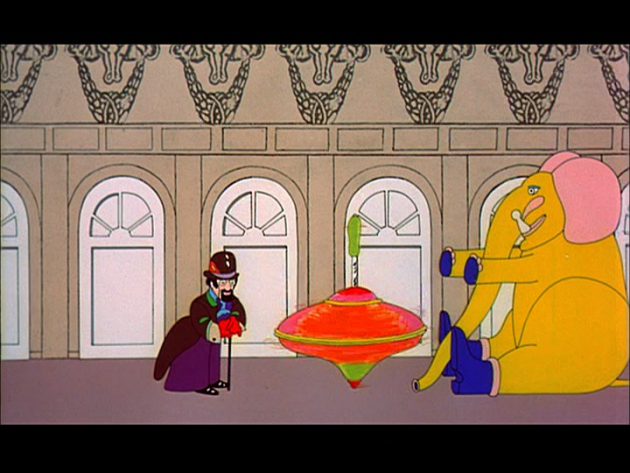
Henri de Toulouse-Lautrec surveys a spinning top
Charlie Jenkins,the creator of the “Eleanor Rigby” sequence, also inserted the faces of many of those involved in the film onto the characters. The producer, Al Brodax, is the man smoking a pipe by the alley, animation director Bob Balser is standing on the corner of a rooftop, animator Alison de Vere is the woman carrying a fishbowl, the blue soccer player(s) is voice actor Geoff Hoyles, while the red one(s) is animator Tony Cuthbert, the man in the phone booth was the bartender of their local pub and the man in the motorcycle gear was the studio “errand boy.” Two of the umbrella men were Heinz Edelmann and George Dunning. 33
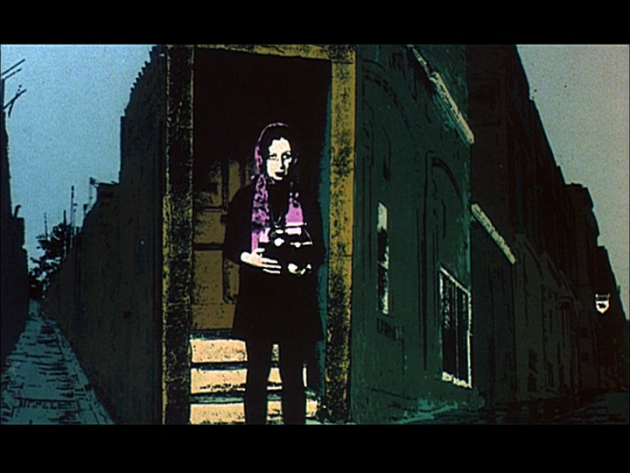
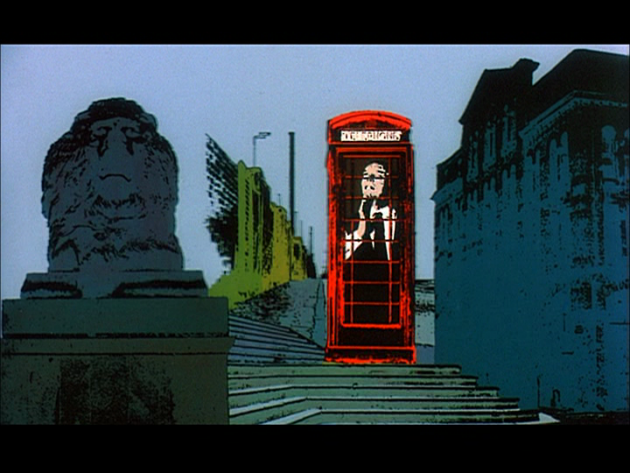
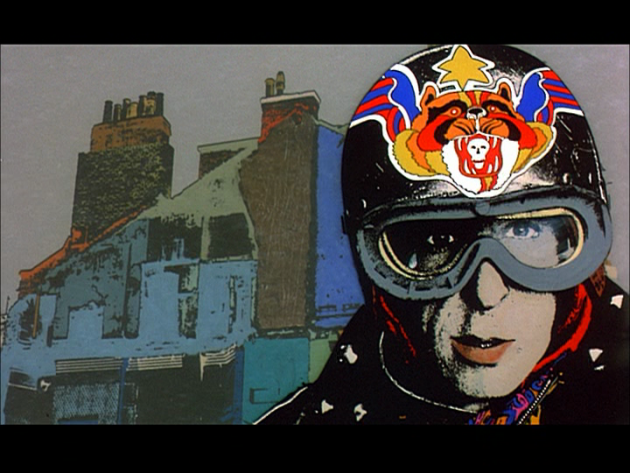
The bit where Ringo is taking a solo walk (before he encounters the submarine) is lifted from a similar solo walk in A Hard Day’s Night (Richard Lester, 1964). The inside of The Beatles’ house is an art nouveau style mansion. Ringo and “young Fred” walk through a pop art dream (or perhaps nightmare?) of an anteroom stuffed with oversize food sculptures, including a hot dog (with mustard), a half-full pop bottle, a cup cake, and what looks like Italian sausage.
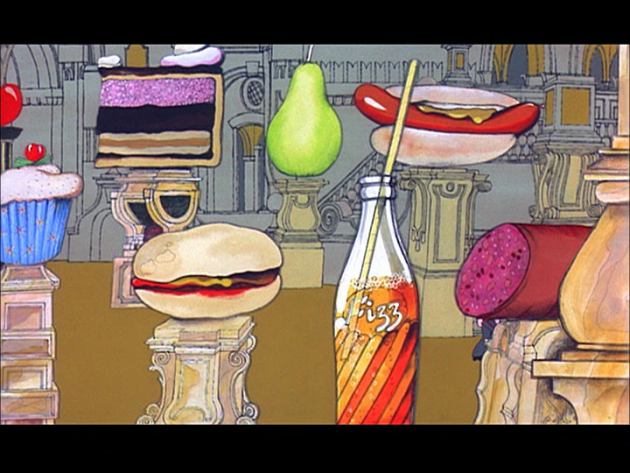
As they enter John’s room, they encounter a series of Sgt. Pepper-style cutouts of, among others, Marilyn Monroe, Mandrake the Magician, Buffalo Bill and the Phantom. The room is a Dali-esque laboratory with giant, melted pipes and test tubes, and strapped to a table in the middle is a giant Frankenstein’s monster. The monster drinks from a beaker and turns into John Lennon, a reference both to Dr. Jekyll and Mr. Hyde and Lennon’s known experimentation with recreational pharmaceuticals. George is found meditating on a mountaintop to the sound of a sitar, referencing both his mysticism and his interest in Indian music. Paul is finishing off a classical concert to wild applause, a possible reference to his recent composing of soundtrack music for the film The Family Way (1967, Roy Boulting). Before they leave the house, they open doors on a scene from King Kong (1933, Merian C. Cooper) and an onrushing train which could be a reference to Buster Keaton’s 1927 film The General 34 or possibly to the early Lumière Brothers film of a train entering a station, the sight of which is alleged to have terrified the audience into stampeding from the room where it was shown. As the Beatles begin their journey, their progress is marked by postcards which chart a series of landmarks between Liverpool and London.
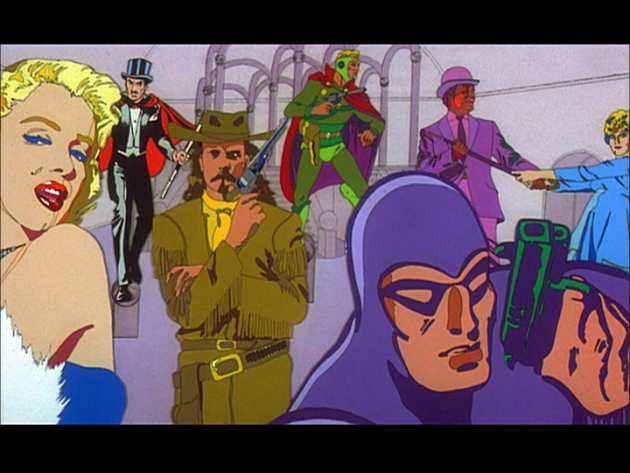
John’s room, featuring Marilyn Monroe, Mandrake the Magician, Buffalo Bill, a gap in my 1960s pop culture knowledge, the Phantom, and Steed (Patrick Macnee)and Gale (Honor Blackman) from the British 1960s TV series The Avengers
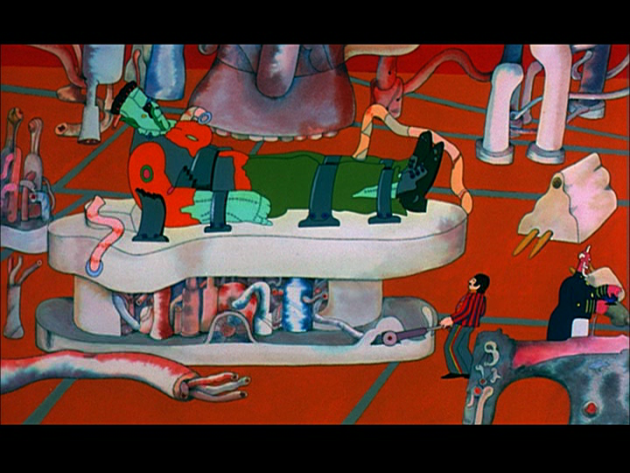
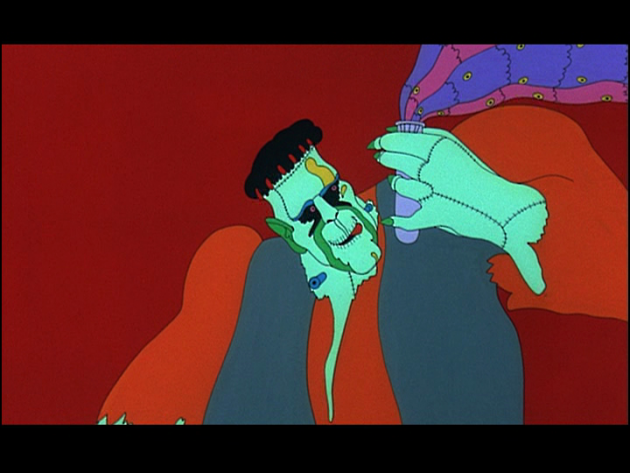

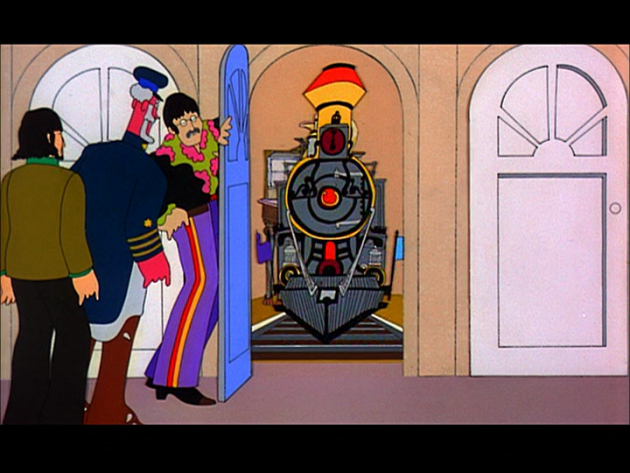
The “Only a Northern Song” sequence has Andy Warhol-style silk screens of each of The Beatles and illustrated sound waves that recall the work of Len Lye. The Sea of Monsters features a Boxing Glove Monster and an exploding cigar gag to the tune of J.S. Bach’s “Air Suite No. 3” that is a parody of a then popular British commercial for Hamlet cigars that also used the Bach piece. 35 The cavalry riding to rescue Ringo from Indians is a reference to Hollywood cowboy films, complete with the famous butte seen in John Ford’s Monument Valley westerns. The Vacuum Monster who sucks all the other animals before devouring all the scenery and drawn backgrounds until he is left in a blank space is a nod to that famous reflexive cartoon Duck Amuck (1953, Chuck Jones). In the “Nowhere Man” sequence, at one point The Beatles are seen singing while standing on a giant op art-style lp. Also influenced by op art is the Sea of Holes, specifically Bridget Riley’s 1964 painting “Pause”.
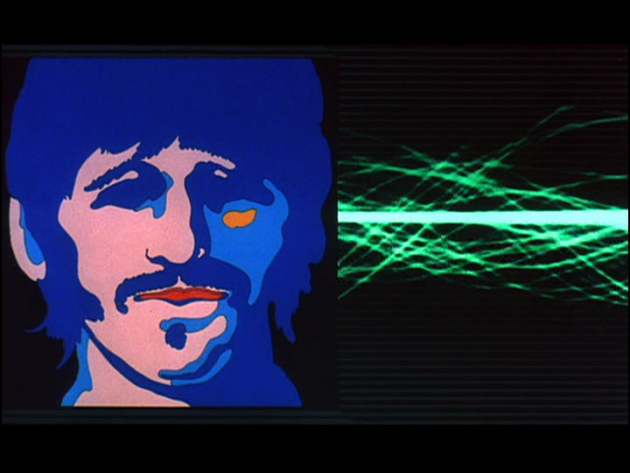
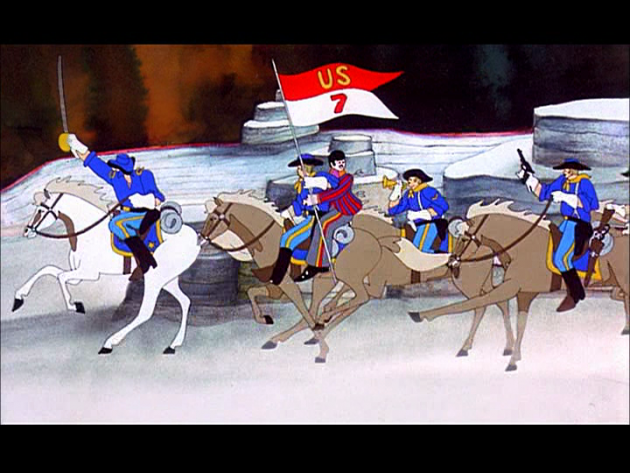
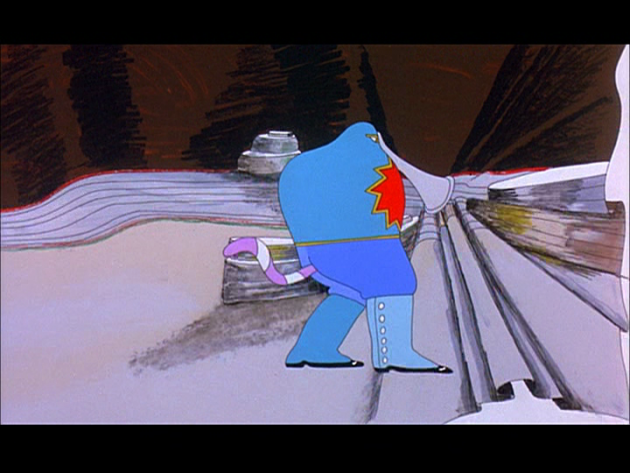
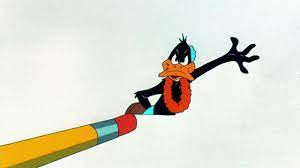
Duck Amuck (Chuck Jones, 1953)
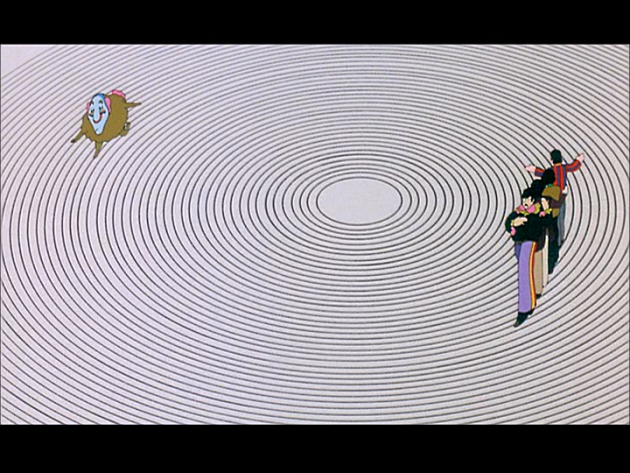
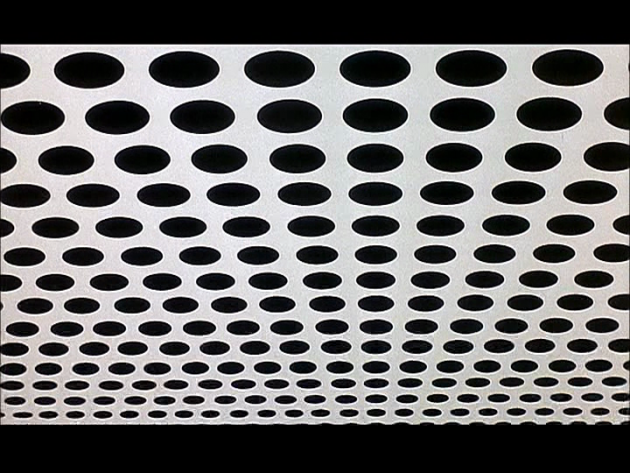
The Sea of Holes
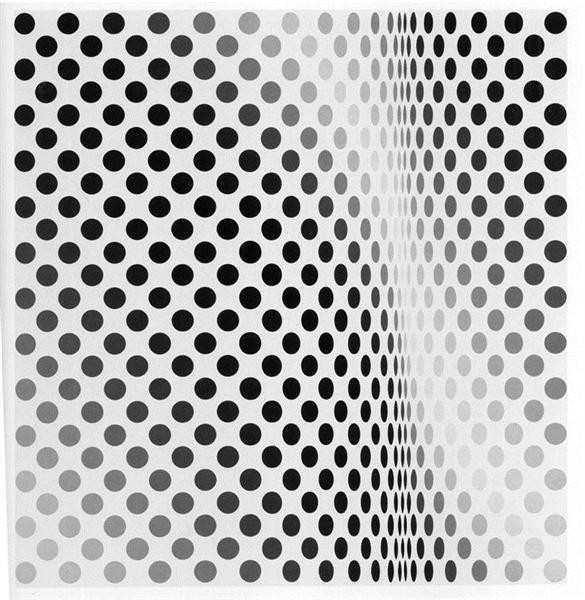
Pause (Bridget Riley, 1964)
The most spectacular of the song sequences is the animation of “Lucy in the Sky with Diamonds.” George Dunning, its principal creator, describes the scene as a “musical number” [that is, a Beatles song] transformed into a “dance number.” 36 But not just any dance number, but an elaborate tribute to 1930s Hollywood musicals, featuring a series of rotoscoped dancers, including Eddie Cantor, Fred Astaire and Ginger Rogers, Ruby Keeler, and chorus girls out of a Busby Berkeley-style musical.
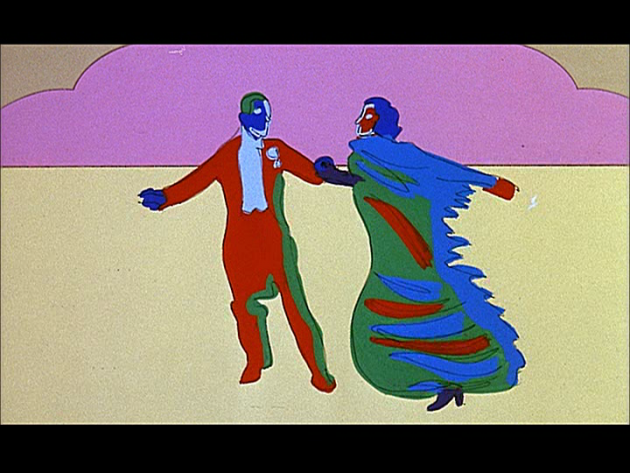
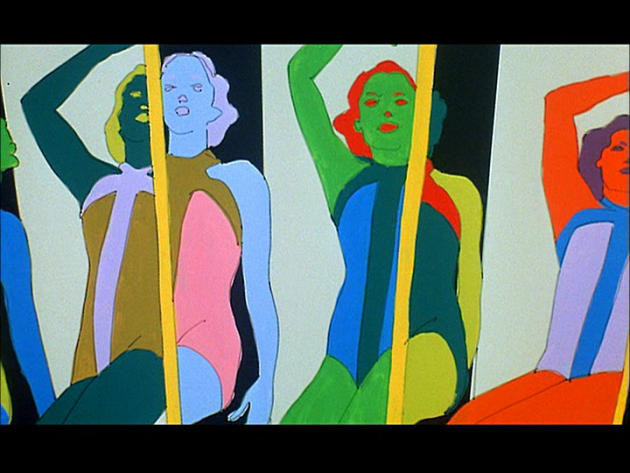
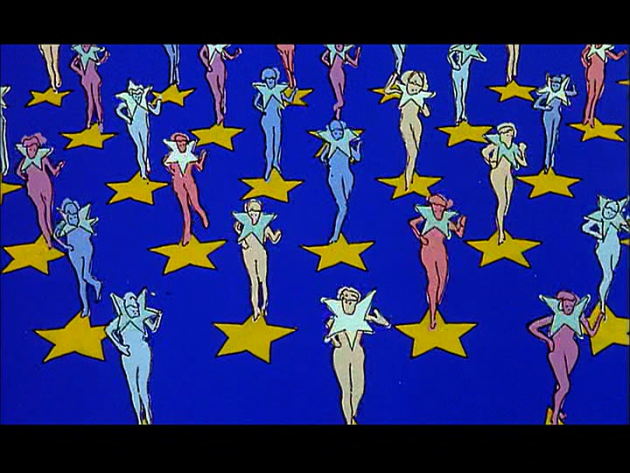
The “All You Need Is Love” sequence, where the Beatles wake up Pepperland and battle the Blue Meanies with their words, references a different side of 1960s culture, as does the image of the flower in the gun in “Hey Bulldog.” The film was made in the context of world events that were taking place outside the studio walls. Heinz Edelmann had been born in Czechoslovakia, and had originally intended the Blue Meanies to be Red Meanies as a reference to the Communist government there, 37 and he had to be aware of the events of the Prague Spring, where it seemed The Beatles’ idealistic belief in the power of love seemed to be coming true (and didn’t come to a crashing end until August of 1968, after the film was finished). As an aside, when Philip Kaufman devised the Prague Spring montage for his 1988 film The Unbearable Lightness of Being, the extremely apt song he chose to play over it was a Czech-language version of “Hey Jude.” There were also the anti-Vietnam War and Civil Rights marches in the U.S. and elsewhere, and few captured the marchers’ utopian fervor and belief in victory than “All You Need Is Love.” When Lennon’s words become solid and rout the Blue Meanies, it reflects a time when young people all over the world, perhaps naively, believed that songs could change the world for the better.
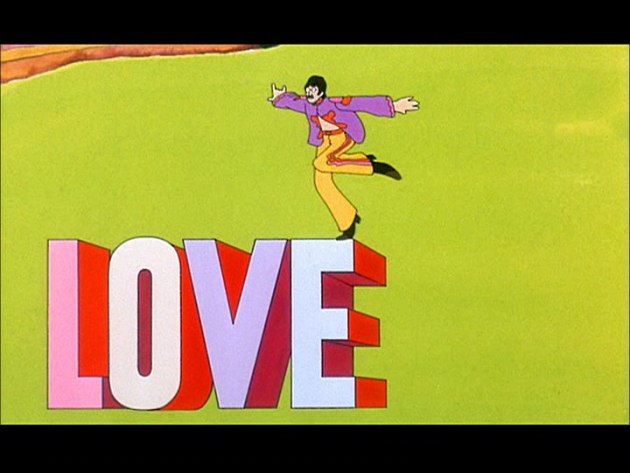
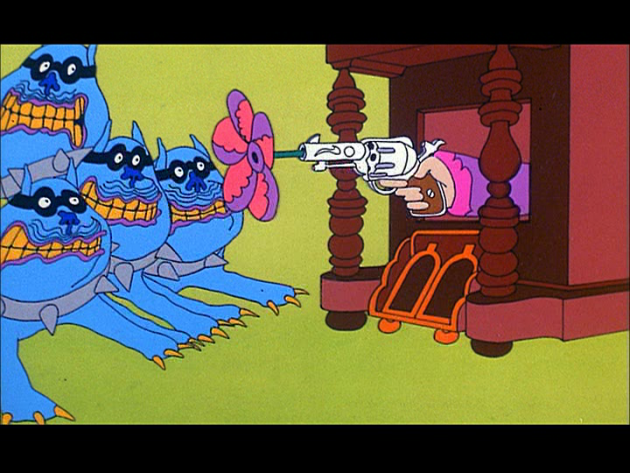
Yellow Submarine was not, scene by scene, all that innovative. As Hieronmus points out, the styles and techniques had almost all “been done before, at least on experimental art films on the animation circuit.” 38 But it was innovative as a whole, because it threw all these styles and techniques into the same soup bowl. In his review, the critic John Simon says the reason the film works is because “the outrageous mélange des genres is served up as demurely as the most ingenious tossed salad,” and that it is done completely unselfconsciously. 39 The other major innovation is that this experimentation and mixing and mashing was not done on a low budget short film meant for the festival circuit, but on a commercial feature film intended to attract a mainstream audience. It is no wonder that 1968 audiences watching the film thought they had taken too much brown acid.
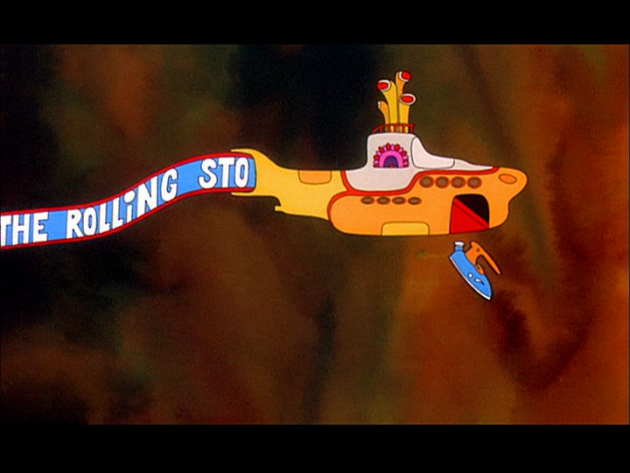
Bibliography
“Art: New Magic in Animation.” Time. (December 27, 1968): http://content.time.com/time/subscriber/article/0,33009,900461-1,00.html
Chernick, Karen. “Why Magritte Was Fascinated with Bowler Hats.” Artsy. (April 12, 2018): https://www.artsy.net/article/artsy-editorial-magritte-fascinated-bowler-hats
Del Tredici, Robert. The History of Animated Film. Montreal, QC, 2010.
Hieronimus, Robert R., “Heinz Edelmann: The Father of Yellow Submarine Art.” Hieronimus & Co.’s Yellow Submarine Journal. 18-19 (1999): 8-10.
Hieronimus, Robert R. Inside the Yellow Submarine: The Making of the Beatles’ Animated Classic. Iola, WI: Krause Publications, 2002.
Kauffman, Stanley. “Yellow Submarine.” Film 68/69: An Anthology by the National Society of Film Critics, eds. Hollis Alpert and Andrew Sarris. New York, NY: Simon & Schuster, 1969. 152-153.
Martin, George. All You Need is Ears. London, UK: St. Martin’s Press, 1979.
Simon, John. “Yellow Submarine.” Film 68/69: An Anthology by the National Society of Film Critics. eds. Hollis Alpert and Andrew Sarris. New York, NY: Simon &
Schuster, 1969. 153-154.
Wilson, David. “Yellow Submarine.” Monthly Film Bulletin 35, no.116 (1968): 136-7.
Notes
- “Yellow Submarine.” The Numbers. https://www.the-numbers.com/movie/Yellow-Submarine#tab=summary .; “Yellow Submarine.” Box Office Mojo. https://www.boxofficemojo.com/release/rl1896121857/weekend/ .; “Big Rental Films of 1968.” Variety. (January 8, 1969): 15. ↩
- Robert R. Hieronimus. Inside the Yellow Submarine: The Making of the Beatles’ Animated Classic. Iola, WI: Krause Publications, 2002, 20. ↩
- Ibid, 78. ↩
- Ibid, 72. ↩
- Ibid, 51, 66 ↩
- Ibid, 81. ↩
- Ibid, 81 ↩
- Robert R. Hieronimus, “Heinz Edelmann: The Father of Yellow Submarine Art.” Hieronimus & Co.’s Yellow Submarine Journal 18-19 (1999): 8 ↩
- Ibid, 9 ↩
- Hieronimus, Inside the Yellow Submarine, op cit, 129. ↩
- Among his many credits, Williams would create the famous title credits for The Return of the Pink Panther (Blake Edwards, 1975) and win two Oscars for his work on Who Framed Roger Rabbit? (Robert Zemeckis, 1988). ↩
- Ibid, 49. ↩
- Ibid, 94. ↩
- Ibid, 100. ↩
- Ibid, 96. ↩
- Ibid, 136. ↩
- Ibid, 146. ↩
- George Martin. All You Need is Ears. London, UK: St. Martin’s Press, 1979, 226. ↩
- Hieronimus, Inside the Yellow Submarine, op cit, 16. ↩
- Ibid, 42; Martin, All You Need is Ears, op cit, 226. ↩
- Hieronimus, Inside the Yellow Submarine, op cit, 295. ↩
- Ibid, 45. ↩
- Ibid, 197. ↩
- Ibid, 97. ↩
- Stanley Kauffman, “Yellow Submarine.” Film 68/69: An Anthology by the National Society of Film Critics, eds. Hollis Alpert and Andrew Sarris. New York, NY: Simon & Schuster, 1969, 152. ↩
- Hieronimus, Inside the Yellow Submarine, op cit, 185 ↩
- Ibid, 104. ↩
- Robert Del Tredici, The History of Animated Film. Montreal, QC, 2010, 154. ↩
- Hieronimus, Inside the Yellow Submarine, op cit, pg. 259. ↩
- Ibid, 48. ↩
- It should be noted that while the members of The Beatles grew up in Liverpool and could not have escaped some level of involvement with its famous sporting teams, they were not known as great fans. The most famous story concerning this is that when they returned to England in 1966 after completing an extensive world tour, they were asked by a journalist if they would be watching the World Cup Final the following day, and they replied “Who’s playing?” At any rate, every football (soccer) fan in the U.K. (of which there are many, even without The Beatles) would have picked up on the nod to Liverpool and Everton. ↩
- David Wilson, “Yellow Submarine.” Monthly Film Bulletin 35, no. 116 (1968): 136. ↩
- Ibid, 48. ↩
- Hieronimus, Inside the Yellow Submarine, op cit, 259. ↩
- Ibid, 239. ↩
- Ibid, 147. ↩
- Ibid, 131. ↩
- Ibid, 313. ↩
- John Simon. “Yellow Submarine.” Film 68/69 op cit, 153. ↩

